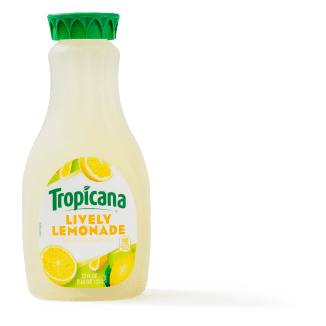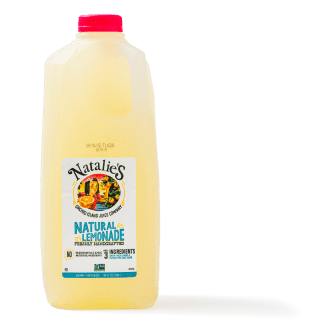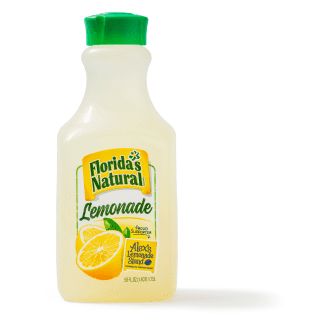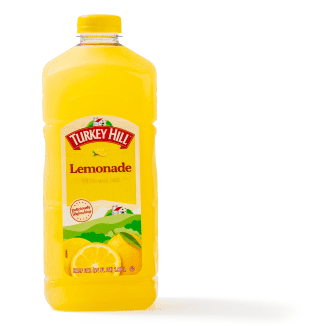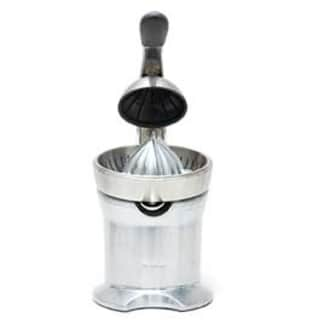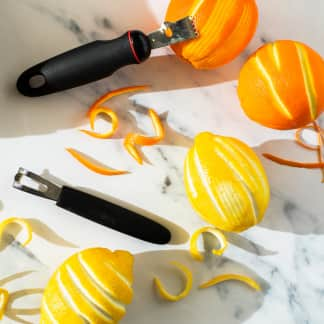Is there anything more refreshing than an ice-cold lemonade on a hot summer day? There’s a reason that we reach for lemonade in warm weather that goes beyond nostalgia and deliciousness. When we’re dehydrated, our mouths feel dry, a sign that we need to take in more liquid. Drinks that are sour cause us to salivate, more so than drinks with any of the other basic tastes of sweet, salty, bitter, and umami. After we’ve taken a sip of lemonade, our mouths remain wet, helping us to feel refreshed.
Colonial Americans knew this well—they often drank shrubs, a sour mixture of fruit preserved in vinegar and water. Modern-day lemonade is thought to be based on a drink from 11th-century Egypt. At that time, traders sold and exported a drink called qatarmizat, a mixture of lemon juice and sugar, writes April White in Lemonade with Zest: 40 Thirst-Quenching Recipes.
To find the best store-bought lemonade we held tastings comparing major brands (as assessed by IRI, a Chicago-based market research firm) and top-rated products from previous evaluations of lemonade and juice. We focused on refrigerated lemonades, which we prefer over shelf-stable. In previous reviews, shelf-stable brands consistently tasted less fresh and we knew we wanted bright, fresh lemonade. We liked many of the drinks, but our tasters had some preferences. We ended up with two great options. Which team are you on: sweet or tart?

What’s the Best Sweet-Tart Balance?
One brand was too sweet, without enough tartness to even the flavor out. All of the other lemonades we tasted were pleasant and had the requisite sweet and tart notes, but the overall balance of those flavors differed from product to product. Here we noticed an interesting pattern: Each of our tasters made a point of noting when a lemonade had the perfect balance of sweetness and bright, fresh lemon flavor, but their definitions of “perfect” differed (this phenomenon of differences in taste preference is well documented). Some tasters thought the drinks that skewed sweeter were the best, while others preferred lemonades that tasted mostly tart and only a little bit sweet. Your preferred lemonade is a personal choice, to an extent.
The History of Lemonade
Lemonade has a long history, dating back to the 11th century. The first written mention of lemonade was in 11th-century Egypt by a Persian poet named Nasir-i-Khusraw, writes April White in Lemonade with Zest: 40 Thirst-Quenching Recipes (2018). At that time, traders sold and exported a drink called qatarmizat, a mixture of lemon juice and sugar. Modern-day lemonade is thought to be based on this drink. Lemonade hit the streets of Paris in the 16th century, but it wasn’t until the 18th century that it arrived in the United States. We’ve been enjoying it ever since.
Image: Lemonade drinkers in Naples, Italy, illustration from Il Giornale Illustrato, Year 3, No 45, November 10-17, 1866. Credit: GDEA / BIBLIOTECA AMBROSIANA / Contributor
Looking for Lemon Flavor
The tartness in the lemonades mostly came from lemon juice, though one brand added orange juice too. A few lemonades also contained lemon oil, lemon pulp, and/or natural flavors, to enhance the lemon flavor. We liked some of those lemonades a lot, but these additions weren’t a determining factor in preferences. Overall, the lemonades in our lineup contained between 10 and 20 percent lemon juice. Those that contained more lemon juice—between 15 and 20 percent—tasted more tart than sweet, even when they were made with a relatively high amount of sugar. When shopping, look for the percentage of juice printed on the bottle’s label. If you like sweeter lemonade, look for less than 15 percent juice; if you prefer tarter lemonade, choose a lemonade that contains 15 percent juice or more.

The Type of Sweetener Matters
Balancing out all that tartness was always a hefty dose of sweetness, but the source of the sweetness varied and we had preferences. Lemonades made with sugar tasted best; it didn’t distract from the fresh lemon flavor. High fructose corn syrup sometimes contributed a “syrupy” flavor. Meanwhile, the monk fruit extract used by one manufacturer gave that lemonade a slightly “musty” flavor. Artificial sweeteners such as sucralose and acesulfame potassium also drew some mild criticism. One astute taster noted a “substitute sweetener” flavor in lemonades sweetened with them.

Our Winners: Tropicana Lively Lemonade and Natalie’s Natural Lemonade
Following the lead of our tasters’ preferences, we couldn’t name just one winner. For those who like sweet lemonade, the best option is Tropicana Lively Lemonade. But if your ideal lemonade is brightly tart, buy Natalie’s Natural Lemonade. Both winners tasted balanced, refreshing, and bright, but Tropicana, which is made with 10 percent lemon juice, had a “lingering sweetness in the aftertaste.” Natalie’s Natural Lemonade, which contains 20 percent lemon juice, “comes on strong” and was “super punchy” and “very tart.” The sugar used to sweeten them still allows the lemon flavor to shine. Although they appeal to slightly different tastes, both are deserving of your next backyard barbecue.
- Sample plain
- Compare percentage of fruit juice
- Compare sugar per 8-ounce serving
- Fresh lemon flavor
- Balance of sweetness and acidity
- Sweetened with sugar

